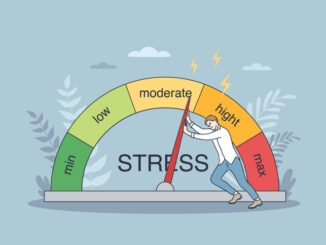
It was the buzzword of 2021, but what does ‘manifestation’ look like in real life, and how can we use this tool to improve our mental health?
CREDIT: This is an edited version of an article that originally appeared on Happiful
It’s a wellness technique that has soared in popularity recently, with Google searches for ‘manifestation methods’ increasing by a massive 15,492% in 2021 – but what exactly is ‘manifestation’? Well, speaking literally, it means to ‘bring thoughts into existence’ – so what does that look like in practice?
“Manifestation can seem to some people to be quite spiritual, or even ‘woo woo’. I see it as something that all of us are doing every day of our lives,” says Amy Reeve, a life coach and clinical hypnotherapist who uses manifestation in her practice. “Take, for example, when you have a bad morning. The alarm doesn’t go off, and you’re late; then maybe you are rushing and rip a hole in the top you put on. Many people would start to think ‘Well, this is an awful day.’ Once we get into that mindset it can become a self-fulfilling prophecy, as we will continue to ‘manifest’ negativity for the rest of the day. Equally, think of a day when you felt like you were on top of the world and owning everything; it propbably started off with one thing going right and you thought ‘This is going to be a great day!’ You ‘manifested’ that great day; it wasn’t luck.”
When you put it like that, it sounds pretty straightforward and it’s no wonder that interest in manifestation has skyrocketed in recent years when the obstacles we’ve faced in our daily lives have grown exponentially.
Amy’s explanation also highlights some of the misconceptions about manifestation floating about there – namely that it’s a simple case of ‘ask and you shall receive’ – leading some to brand it as ‘pseudoscience’. While there are yet to be any conclusive studies on manifestation specifically, what is supported by science is that believing you can do something makes it more likely that you’ll successfully do it, as is highlighted in the work of American psychologist Dr Carol Dweck, whose book, Mindset: Changing The Way You Think To Fulfil Your Potential, explores into the power of our minds.
When asked how manifestation can support our wellbeing more widely, Amy has a different take. “I’d argue the opposite; our wellbeing can support manifesting what we want in life,” she says. “If we don’t feel good about ourselves, don’t believe in ourselves, or don’t love ourselves, then our wellbeing may be low and we will be unable to manifest great things into our lives. If we focus on our wellbeing – be that growing our confidence, having a better work-life balance, spending time every day doing what we love – then we will more easily be able to manifest what we want from life, because we are in a place of strength, completeness, and contentment already. Again, this is a self-fulfilling prophecy. The more we prioritise our wellbeing, and choose to feel good, the easier it is to continue to feel good and manifest what it is we want from life.”
Not a magic bullet
What’s clear is that manifestation alone won’t be able to solve all our problems – which is an important and realistic point to take note of – but by taking a 360° approach to our health, working in everything from nutrition and exercise, through to setting boundaries and practising self-care, harnessing the positive feelings from overall good wellbeing comes more easily.
However, if you’re not yet at that point, it might be helpful to first try to take stock of where you’re at right now. “Dr Wayne Dyer explained that manifesting is not about attracting what you want; it is an awareness and understanding that you attract what you are,” Amy continues. “So if you feel unworthy, incomplete, unconfident or unloved, manifesting in those areas will be extremely challenging. That’s why we need to start by working on our confidence, self-worth and self-belief, in order to come from a place of strength.
“When I work with clients who have low self-esteem or self-worth, I get them to write down everything negative that they perceive about themselves. We then turn those into positive statements, and the client reads them out loud to themselves in a mirror every day for a month. For example, ‘No-one loves me’ becomes ‘I am infinitely loveable and I love myself’. It may sound silly, but it works! Affirming the positive can literally change the way we think about ourselves. Once we get to a place where we feel good, manifesting becomes much easier.”
Putting it into action
So, how can we manifest in practice? Well, you may want to start by simply setting an intention, thinking about the things that you desire, and – bearing in mind Amy’s notes on first understanding who you currently are – the ways that you want to feel, tuning into the details to assess what you might need to change in order to see those things become reality.
You may also want to create a vision board – which is a good way to visualise the future that you want. You can fill it with inspirational photos that represent the qualities that you desire. This is something you can get crafty with, by cutting out images from magazines and newspapers – or Pinterest is often dubbed the ‘virtual vision board’, and you can create as many boards as you desire, pinning the things that resonate with you, and sorting your boards into categories.
Ultimately, every element of wellness comes together to create the full picture, and it’s never going to be the case that one single action will change a life, but bringing tools like manifestation together with other areas of wellbeing will set the course for your intentions, and could lead to brighter things on the horizon.



Be the first to comment